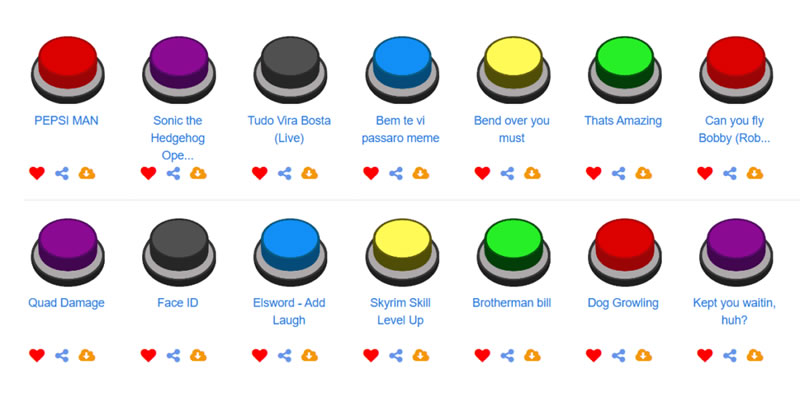How to Choose Proper Meme Sounds for Teaching Pronunciation and Phonetics?
Teaching pronunciation and phonetics can be tricky, but it shouldn't be boring. Using meme sounds is one of the more interactive ways to make learning fun and memorable. Meme sounds are small pieces of audio, usually from popular videos or songs, with which students may be familiar. Using meme sounds would surely capture the students' attention, and the lesson would also be more interactive. Here, we will discuss the selection of appropriate meme sounds for teaching pronunciation and phonetics, why they work, and how you can use them to help students improve their speaking skills.

Why Meme Sounds Used in Pronunciation Teaching
Using meme sounds in language teaching combines humor with familiarity, which may increase engagement and memory retention. Language acquisition research has shown that the more emotionally involved learners are with the content, the more likely they are to remember it. With websites like https://soundbuttonslab.com, offering a database of unique soundboard options, it's easy to find the perfect sound for your lesson. You can see the sounds that resonate with students instantly and make pronunciation practice relevant and fun.
For instance, one study by the British Council found that using familiar pop culture elements in language teaching can improve pronunciation accuracy by up to 30%, as learners are more likely to mimic the sounds they enjoy or find entertaining. Meme sounds add fun, helping students practice without pressure.
How to Choose the Right Meme Sounds
Using meme sounds in teaching is one way to make students remember through active learning. The proper selection of meme sounds will make all the difference in teaching pronunciation and phonetics or simply adding fun to your lessons. Here is how:
Pick the sounds that correspond to specific phonemes or other sounds.
Then select the meme sounds that bring out some phonemes and individual sounds within a language. For example, teaching the pronunciation of English uses the sounds that pinpoint finicky phonemes like "th" in "think" or "v" in "very." Students are allowed to repeat them to practice pronunciation characteristics.
For example, the phrase "Thank U, Next" from a popular song by Ariana Grande is very recognizable and brings attention to the "th" sound. Using this clip can help students focus on pronouncing "th."
Use Sounds That Emphasize Intonation and Stress
Intonation and stress are important features that constitute the naturalness of a new language. Most meme sounds, but especially those emotionally colored or with emphatic intonation, draw much attention to intonation and stress. Giving students meme sounds that model more natural intonation patterns will help them catch these two important pronunciation features.
For example, the phrase "Oh my God" which is generally high-pitched and exaggeratedly said in most memes, would be great for intonation and expressing emotion in speaking. Students will have practice copying this phrase paying close attention to how pitch and stress add meaning.
Choose Short and Simple Sounds
Short, simple sounds are more effective for language practice because they allow students to focus on details without becoming overburdened. Stick to clips that are no longer than a few seconds; these are easier for students to repeat and analyze. If the sound is too complex, students might miss key pronunciation elements.
For instance, a short sound like "Yeet!" can be used humorously in context and is easy to repeat; it allows students to practice the pronunciation of single syllables and sounds.
Tips for Using Meme Sounds in Pronunciation Practice
Using meme sounds while teaching pronunciation adds a bit more fun to learning. Here are a few practical tips for effectively using these sounds to enhance students' pronunciation capabilities.
Pair the Sounds with Visual Aids
Repeat and then Mimic for Mastery.
Encourage Peer Practice
Benefits of Using Meme Sounds for Phonetic Practice
Meme sounds used in phonetic practice create distinctive benefits that can help in learning and make pronunciation exercises more enjoyable and memorable for the students.
Nurtures Confidence
Makes Pronunciation Practice More Fun
Helps with Memorization
Common Mistakes to Avoid
While meme sounds can be a powerful tool for teaching pronunciation, some common mistakes must be avoided to ensure they're used effectively and appropriately.
Avoid Overusing Complex Sounds
Avoid Sounds That May Cause Offense or Confusion
Final Comments
Memes in pronunciation and phonetic practices can be fun, as well as a very effective tool for teaching. Choosing sounds that match your teaching goals—whether phonemes, intonation, or stress offers an engaging learning environment. Familiarity and humor will lower the level of stress, which makes pronunciation practice not feel like work but rather fun. Used thoughtfully, meme sounds can be an excellent addition to any language teacher's toolkit.








